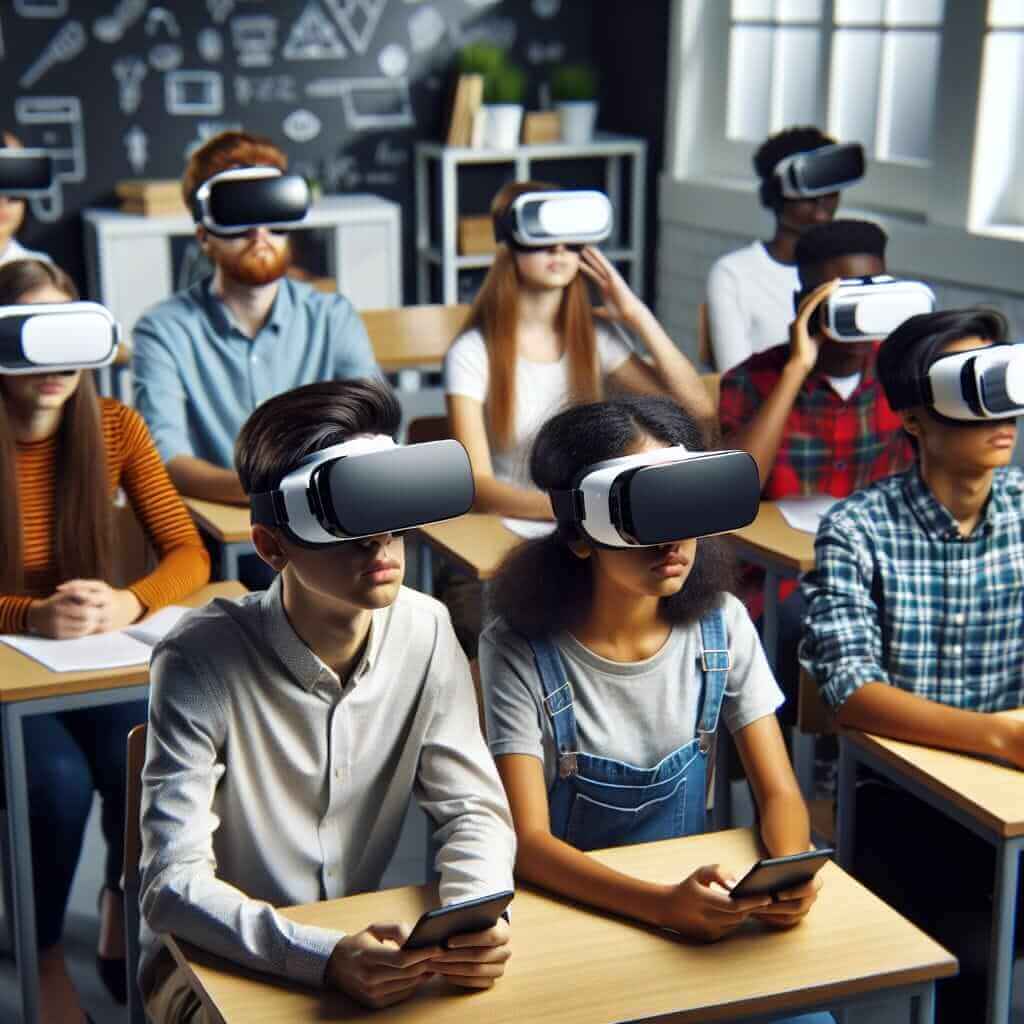The IELTS Reading section requires test-takers to read passages and answer various types of questions. One prominent topic that has surfaced in recent years is the impact of technological advancements on education. Specifically, the rise of Virtual Reality (VR) has been an intriguing subject. VR’s increasing presence in the classroom significantly influences educational outcomes, warranting its frequent appearance in reading comprehension sections. Given its relevance and potential to reappear in future exams, let’s delve into this topic.
Virtual Reality in Education: IELTS Reading Practice
Passage
Examining the Influence of Virtual Reality on Educational Practices
Virtual Reality (VR) technology has rapidly transcended beyond the realm of gaming and entertainment to make significant inroads into education. As a result, educators and technologists alike are exploring its potential to revolutionize learning experiences globally.
Firstly, VR offers an immersive learning environment unparalleled by traditional teaching methods. Students can experience historical events, scientific phenomena, or explore geographical locations first-hand, making abstract concepts tangible and easier to comprehend. For example, a biology student can virtually explore a human cell, observing its structure and functions with a level of detail previously unattainable.

Moreover, VR can cater to different learning styles, meeting the needs of visual, auditory, and kinesthetic learners. Interactive simulations and 3D modeling allow for engaging and personalized education, which can adapt to each student’s pace and level of understanding. This adaptability is especially beneficial for special education, where customized learning experiences can significantly impact student outcomes.
Despite these promising benefits, several challenges persist in integrating VR into the educational mainstream. The primary hurdle is the cost associated with VR equipment and software. Schools with limited budgets find it challenging to procure and maintain such technology. In addition, there is a steep learning curve for both teachers and students in mastering VR tools, necessitating extensive training and support.
Furthermore, while VR can enhance engagement, it might also present health risks such as eyestrain or motion sickness. Prolonged exposure to VR environments can adversely affect younger students’ vision and overall well-being. Hence, moderation and careful monitoring are crucial.
In conclusion, Virtual Reality holds a transformative potential in education, opening new avenues for immersive and interactive learning. However, widespread adoption hinges on addressing financial, technical, and health-related challenges.
Questions
Multiple Choice
-
What is the primary advantage of VR in education?
a) It is cost-effective for schools
b) It allows for immersive learning experiences
c) It negates the need for traditional textbooks
d) It simplifies the teacher’s role -
According to the text, what is one major challenge of integrating VR into education?
a) Lack of student interest
b) Health risks associated with VR usage
c) Insufficient subject matter
d) Redundant teaching methods
True/False/Not Given
- VR technology is less effective for auditory learners compared to visual learners.
- Prolonged use of VR does not pose any health risks.
Matching Headings
Match the following headings to the appropriate paragraphs:
- Challenges in Implementation
- Benefits of VR in Education
- Conclusion about VR’s Role in Education
Sentence Completion
Complete the sentences using no more than three words:
- VR can help visualize ____ which are hard to grasp through traditional methods.
- One of the challenges in incorporating VR is the associated ____.
Answer Keys
Multiple Choice
- b) It allows for immersive learning experiences
- b) Health risks associated with VR usage
True/False/Not Given
- Not Given
- False
Matching Headings
- Paragraph 3
- Paragraph 2
- Paragraph 5
Sentence Completion
- scientific phenomena
- cost
Common Mistakes and How to Avoid Them
- Misreading the Passage: Students often misinterpret the text because they read too quickly. Take your time to understand key points and context.
- Not Paying Attention to Keywords: Focus on keywords in the questions that can guide you to the correct section of the passage.
- Skipping Difficult Words: Note challenging vocabulary and use context to infer meaning rather than skipping them.
Key Vocabulary
- Immersive (adj.) | /ɪˈmɜː.sɪv/ | providing a completely engrossing or absorbing experience.
- Procuring (v.) | /prəˈkjʊərɪŋ/ | obtaining something, especially with effort.
- Tangibly (adv.) | /ˈtæn.dʒə.bli/ | in a way that is clear and definite.
Difficult Grammar Structure
Subjunctive Mood: Often used to express demands, suggestions, or hypothetical situations.
- Example: “It is essential that a training program be implemented for teachers.”
- Structure: It is essential that + [subject] + [base verb form without ‘to’]
Tips for Achieving a High Reading Score in IELTS
- Practice Regularly: Consistent practice with various text difficulties.
- Enhance Vocabulary: Expand your range of academic and topical vocabulary.
- Develop Skimming and Scanning Skills: Quickly identify key points and relevant details.
- Time Management: Practice under timed conditions to improve speed and efficiency.
Keep these tips in mind, practice diligently, and leverage modern tools like VR to make your learning experience enriching and enjoyable.